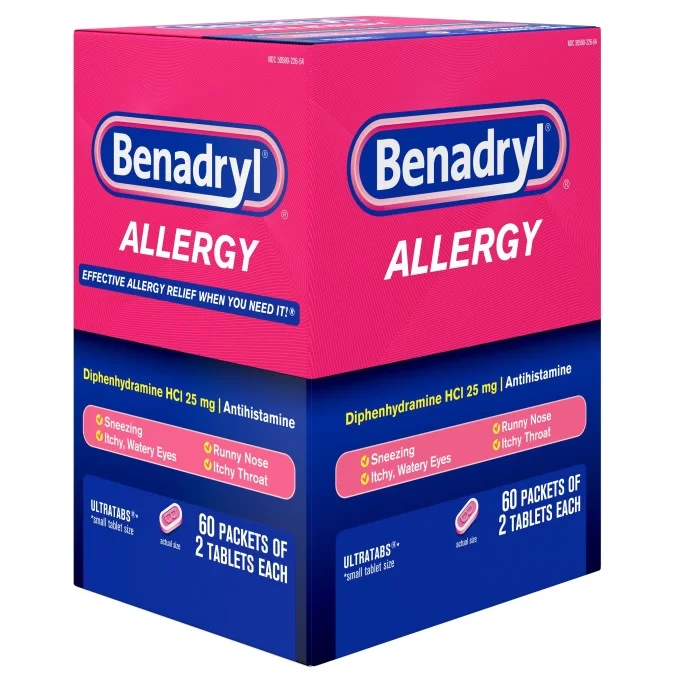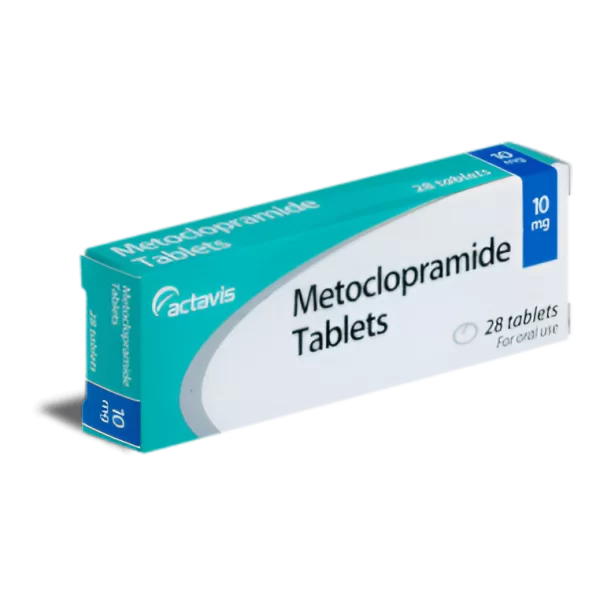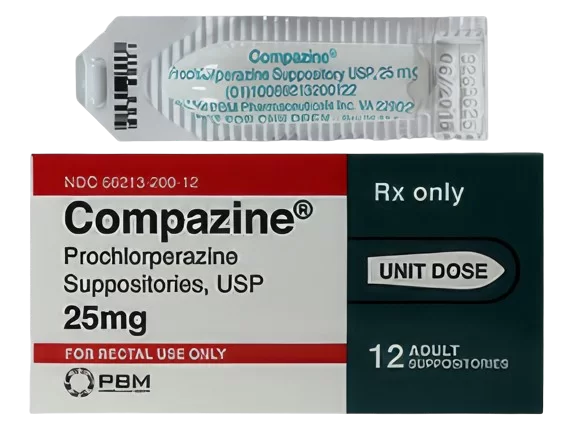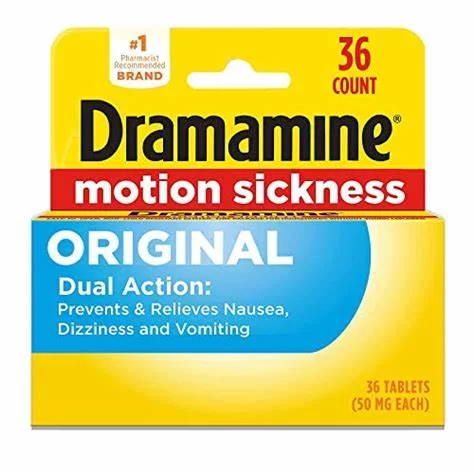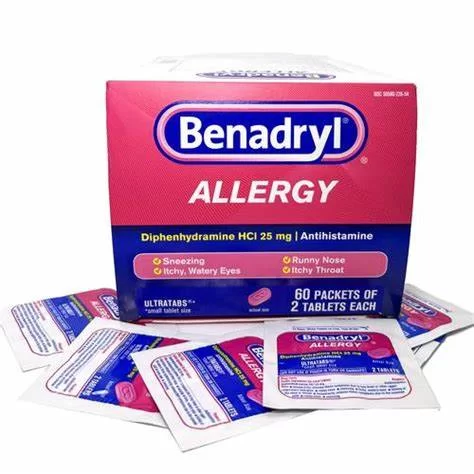
Benadryl
Benadryl - 25mg
Overview of Benadryl
General Introduction to Benadryl
- Benadryl, also known by its generic name diphenhydramine, is an antihistamine commonly used to relieve symptoms of allergy, hay fever, and the common cold. These symptoms include rash, itching, watery eyes, itchy eyes/nose/throat, cough, runny nose, and sneezing. It is also used to prevent and treat nausea, vomiting, and dizziness caused by motion sickness, and to induce sleep.
Key Benefits and Unique Properties of Benadryl
- Allergy Relief: Effectively relieves symptoms of allergies and hay fever.
- Cold Symptom Relief: Provides relief from common cold symptoms.
- Motion Sickness Prevention: Prevents and treats nausea, vomiting, and dizziness due to motion sickness.
- Sleep Aid: Used as a short-term treatment for sleep disturbances.
- Multiple Forms: Available in various forms including tablets, capsules, liquid, and topical applications.
Effectiveness of Benadryl
- Clinical studies and long-term use have demonstrated Benadryl’s effectiveness in managing symptoms of allergies, colds, and motion sickness. It works quickly to alleviate symptoms, usually within 30 minutes of administration.
Safety and Tolerability of Benadryl
- Benadryl is generally well-tolerated when used as directed. Common side effects include drowsiness, dizziness, dry mouth/nose/throat, constipation, blurred vision, and urinary retention. Serious side effects are rare but can include severe allergic reactions and cardiovascular issues.
Indications for Use of Benadryl
Diseases and Conditions Treated by Benadryl
- Benadryl is indicated for the treatment of symptoms related to allergies, hay fever, and the common cold. It is also used for the prevention and treatment of motion sickness and as a short-term sleep aid.
Primary Symptoms and Indications for Benadryl
- Allergy Symptoms: Relief of symptoms such as itching, rash, watery eyes, and runny nose.
- Cold Symptoms: Alleviation of symptoms like cough, sneezing, and runny nose.
- Motion Sickness: Prevention and treatment of nausea, vomiting, and dizziness.
- Sleep Aid: Used to treat occasional sleeplessness.
Dosage and Administration of Benadryl
Recommended Dosage of Benadryl
- The usual adult dose for allergy relief is 25-50 mg every 4-6 hours. For motion sickness, the recommended dose is 25-50 mg taken 30 minutes before travel and continued as needed. For sleep aid, the dose is 50 mg taken 30 minutes before bedtime.
Timing and Frequency of Benadryl Administration
- Allergy Relief: Take every 4-6 hours as needed.
- Motion Sickness: Take 30 minutes before travel and as needed.
- Sleep Aid: Take 30 minutes before bedtime.
Additional Recommendations for Benadryl Use
- Proper Use: Follow the dosing instructions provided by a healthcare professional. Do not exceed the recommended dose.
- Missed Dose: If a dose is missed, take it as soon as remembered unless it is almost time for the next dose. Do not double the dose to make up for the missed one.
- Monitoring: Regular monitoring is not typically required for over-the-counter use, but consult a healthcare provider for prolonged use or if symptoms persist.
Mechanism of Action of Benadryl
Description of Benadryl Mechanism
- Benadryl works by blocking the effects of histamine, a substance in the body that causes allergy symptoms. It binds to the histamine H1 receptor without activating it, thus preventing histamine from exerting its effects.
Biochemical Processes Involving Benadryl
- Histamine Receptor Blockade: Prevents histamine from binding to its receptors, thereby reducing allergy symptoms.
- Central Nervous System Effects: Crosses the blood-brain barrier and exerts sedative effects by blocking histamine receptors in the brain.
Physiological Effects of Benadryl
- Symptom Relief: Reduces symptoms of allergy and cold, such as itching, swelling, and runny nose.
- Sedation: Induces drowsiness, which can be beneficial for sleep aid but requires caution in activities requiring alertness.
Composition of Benadryl
Active Ingredients in Benadryl
- The active ingredient in Benadryl is diphenhydramine hydrochloride.
Inactive Ingredients in Benadryl
- Inactive ingredients may include lactose, magnesium stearate, microcrystalline cellulose, and other excipients depending on the formulation. These ingredients help stabilize the formulation and ensure proper delivery of the medication.
Side Effects of Benadryl
General Introduction
- Understanding potential side effects helps ensure the safe use of Benadryl. Patients should be aware of common and serious side effects to monitor their health effectively while on the medication.
Possible Side Effects of Benadryl
- Common Side Effects: Drowsiness, dizziness, dry mouth/nose/throat, constipation, blurred vision, and urinary retention.
- Less Common Side Effects: Confusion, headache, nervousness, and gastrointestinal disturbances.
- Serious Side Effects: Rare but serious side effects include severe allergic reactions (rash, itching, swelling, severe dizziness, trouble breathing) and cardiovascular issues.
Frequency and Severity of Benadryl Side Effects
- Common side effects are generally mild and manageable with dose adjustments and supportive care. Severe side effects are rare but can be serious, necessitating immediate medical intervention. Regular follow-ups and patient education on correct usage can minimize risks.
Prevention of Side Effects of Benadryl
General Introduction
- Preventing side effects is key to maximizing the therapeutic benefits of Benadryl. By following preventive measures, patients can reduce the likelihood of experiencing adverse reactions.
Tips for Preventing Benadryl Side Effects
- Proper Technique: Use Benadryl as directed, following the instructions for proper administration.
- Avoid Alcohol: Refrain from consuming alcohol while taking Benadryl to avoid enhanced sedative effects.
- Hydration and Nutrition: Maintain adequate hydration and a balanced diet to support overall health.
- Regular Monitoring: Regular check-ups with healthcare providers can help detect and manage potential side effects early.
- Consult Healthcare Providers: Inform your healthcare provider about any other medications or supplements to avoid potential interactions.
Contraindications for Benadryl
General Introduction
- Understanding contraindications ensures the safe use of Benadryl. Certain conditions and diseases may preclude the use of this medication.
Conditions and Diseases Contraindicating Benadryl
- Hypersensitivity: Patients with a known hypersensitivity to diphenhydramine or any of its components should not use this medication. Allergic reactions can include symptoms such as rash, itching, swelling, and difficulty breathing.
- Glaucoma: Should be used with caution in patients with narrow-angle glaucoma as it may increase intraocular pressure.
- Urinary Retention: Use with caution in patients with bladder neck obstruction or urinary retention.
- Respiratory Conditions: Patients with asthma, chronic bronchitis, or emphysema should use Benadryl with caution as it can thicken bronchial secretions.
Warnings/Precautions for Benadryl
General Introduction
- Following precautions is essential to ensure the safe and effective use of Benadryl. Patients should be informed about potential risks and how to mitigate them.
Important Warnings for Benadryl
- Drowsiness and Sedation: Benadryl can cause significant drowsiness and sedation. Patients should avoid driving, operating heavy machinery, or engaging in activities that require full alertness while taking this medication.
- Alcohol Interaction: Avoid consuming alcohol while taking Benadryl, as it can enhance the sedative effects and increase the risk of side effects.
- Elderly Patients: Use with caution in elderly patients, as they may be more sensitive to the sedative and anticholinergic effects, which can increase the risk of falls and confusion.
- Children: Over-the-counter Benadryl should not be used to make a child sleepy. Always follow dosing instructions for children and consult a healthcare provider before use.
Precautions for Benadryl Use
- Regular Monitoring: Regular check-ups with healthcare providers are essential to monitor for potential side effects and ensure effective treatment.
- Patient Education: Patients should be educated on the proper use of Benadryl, recognizing signs of serious side effects, and when to seek medical help.
- Caution in Specific Conditions: Use with caution in patients with glaucoma, peptic ulcer, urinary retention, or respiratory conditions like asthma or COPD, as Benadryl can exacerbate these conditions.
- Pregnancy and Breastfeeding: Consult a healthcare provider before using Benadryl during pregnancy or while breastfeeding to ensure safety for the mother and baby.
Missed Dose of Benadryl
General Introduction
- Proper management of missed doses helps maintain effective treatment outcomes. Patients should be aware of how to handle missed doses to avoid disruptions in their treatment regimen.
Steps to Take if a Dose is Missed
- Timely Action: Take the missed dose as soon as remembered unless it is almost time for the next dose.
- Avoid Doubling: Do not double the dose to make upfor the missed one. Instead, continue with the next dose as scheduled.
Tips for Adherence to Dosing Schedule
- Set Reminders: Use alarms or reminders on your phone to remember to take your doses.
- Consistent Routine: Take the medication at the same time every day to reduce the likelihood of missing a dose.
- Medication Organizer: Use a pill organizer to keep track of your doses and avoid missing any.
Drug Interactions with Benadryl
General Introduction
- Understanding drug interactions is crucial for ensuring the safe use of Benadryl. Some medications can affect the action of Benadryl or increase the risk of side effects.
Examples of Drug Interactions
- CNS Depressants: Concurrent use with other central nervous system depressants (e.g., benzodiazepines, opioids) can enhance sedative effects and increase the risk of severe drowsiness and respiratory depression.
- MAO Inhibitors: Avoid using Benadryl with monoamine oxidase inhibitors (MAOIs) as it can prolong and intensify the anticholinergic and CNS depressant effects.
- Alcohol: Consumption of alcohol can significantly increase the sedative effects of Benadryl, leading to increased drowsiness and impaired motor skills.
Preventing Negative Interactions
- Inform Healthcare Providers: Inform your healthcare provider about all medications and supplements you are taking.
- Read Labels Carefully: Check labels for potential interactions with other medications, especially over-the-counter drugs that may also contain antihistamines.
- Monitor for Symptoms: Watch for signs of side effects or unusual reactions and report them to your healthcare provider promptly.
Overdose of Benadryl
Symptoms of Overdose
- Common Symptoms: Overdose can lead to symptoms such as extreme drowsiness, confusion, weakness, blurred vision, dry mouth, fever, and hallucinations.
- Severe Symptoms: Severe overdose may result in symptoms like seizures, difficulty breathing, and loss of consciousness.
Immediate Actions in Case of Overdose
- Seek Medical Help: Immediately seek medical attention if an overdose is suspected.
- Supportive Measures: Medical personnel may provide supportive measures such as monitoring vital signs, administering activated charcoal, and other symptomatic treatments.
Pharmacokinetics of Benadryl
Absorption
- Rate and Extent: Benadryl is rapidly absorbed from the gastrointestinal tract, with peak plasma concentrations occurring within 2 to 4 hours after oral administration.
Distribution
- Tissue Distribution: Benadryl is widely distributed throughout the body, including the central nervous system.
Metabolism
- Metabolic Pathways: Benadryl is primarily metabolized in the liver through the cytochrome P450 enzyme system.
Elimination
- Excretion: The metabolites of Benadryl are excreted primarily in the urine. The elimination half-life is approximately 4 to 9 hours in healthy adults.
Dosage Forms of Benadryl
Available Forms and Strengths
- Oral Tablets: Available in various strengths, typically 25 mg and 50 mg.
- Liquid Form: Available as a liquid solution for easier administration, especially in children.
- Topical Form: Available as a cream or gel for topical application to relieve itching and rash.
Advantages of Different Forms
- Oral Tablets: Convenient for adults and older children.
- Liquid Form: Suitable for children and individuals who have difficulty swallowing pills.
- Topical Form: Provides targeted relief for skin symptoms.
Pregnancy and Breastfeeding
Safety During Pregnancy
- Risks to Fetus: The safety of Benadryl during pregnancy has not been fully established. It should be used during pregnancy only if the potential benefits justify the potential risks to the fetus.
- Recommendations: Pregnant women should use Benadryl under the guidance of a healthcare provider, with regular monitoring of both mother and fetus.
Safety During Breastfeeding
- Excretion in Breast Milk: Benadryl is excreted in breast milk in small amounts. The effects on a nursing infant are unknown.
- Recommendations: Consult a healthcare provider before using Benadryl while breastfeeding to ensure safety for the mother and baby.
Storage Conditions
General Storage Recommendations
- Storage Temperature: Store at room temperature between 20°C to 25°C (68°F to 77°F).
- Protection from Light and Moisture: Keep in the original packaging, protected from light and moisture.
Shelf Life
- Expiration Date: Check the expiration date on the package and do not use the medication after it has expired.
Clinical Trials and Efficacy
Overview of Clinical Trials
- Study Design and Methods: Clinical trials include randomized controlled trials assessing the efficacy and safety of Benadryl in treating allergy symptoms, cold symptoms, and motion sickness.
Key Findings and Conclusions
- Efficacy Results: Studies have shown that Benadryl effectively alleviates allergy and cold symptoms, and prevents motion sickness. It provides quick relief, usually within 30 minutes of administration.
- Safety Profile: Side effects are generally manageable with dose adjustments and monitoring. Serious side effects are rare when used correctly.
Conclusion
Summary of Key Aspects:
- Benadryl is an effective antihistamine for managing allergy symptoms, cold symptoms, and motion sickness. It offers quick relief and is available in various forms for convenient administration.
Recommendations for Improving Therapy:
- Follow healthcare professional instructions, adhere to prescribed dosages, and attend regular check-ups to optimize treatment and minimize side effects. Monitoring and adjusting lifestyle factors, such as avoiding alcohol and staying hydrated, can further enhance the therapeutic benefits.
Final Conclusion:
- Benadryl provides essential support in managing allergy and cold symptoms, helping to improve the quality of life for patients. Proper use and adherence to precautions maximize the therapeutic benefits and minimize risks, offering substantial improvements in patient health and well-being.

